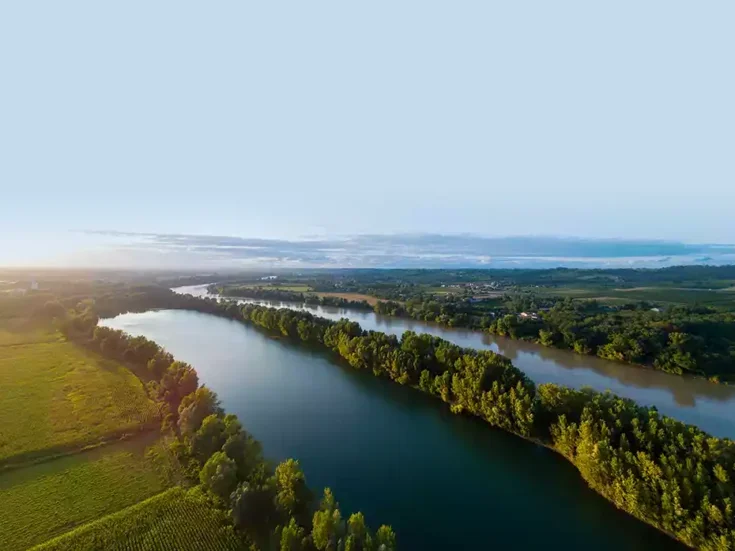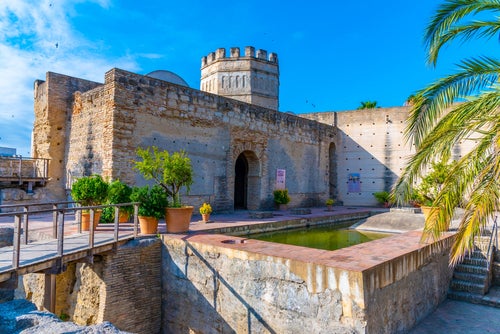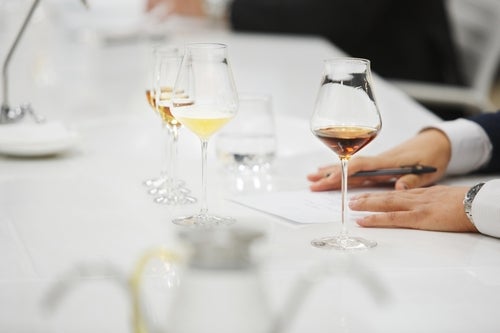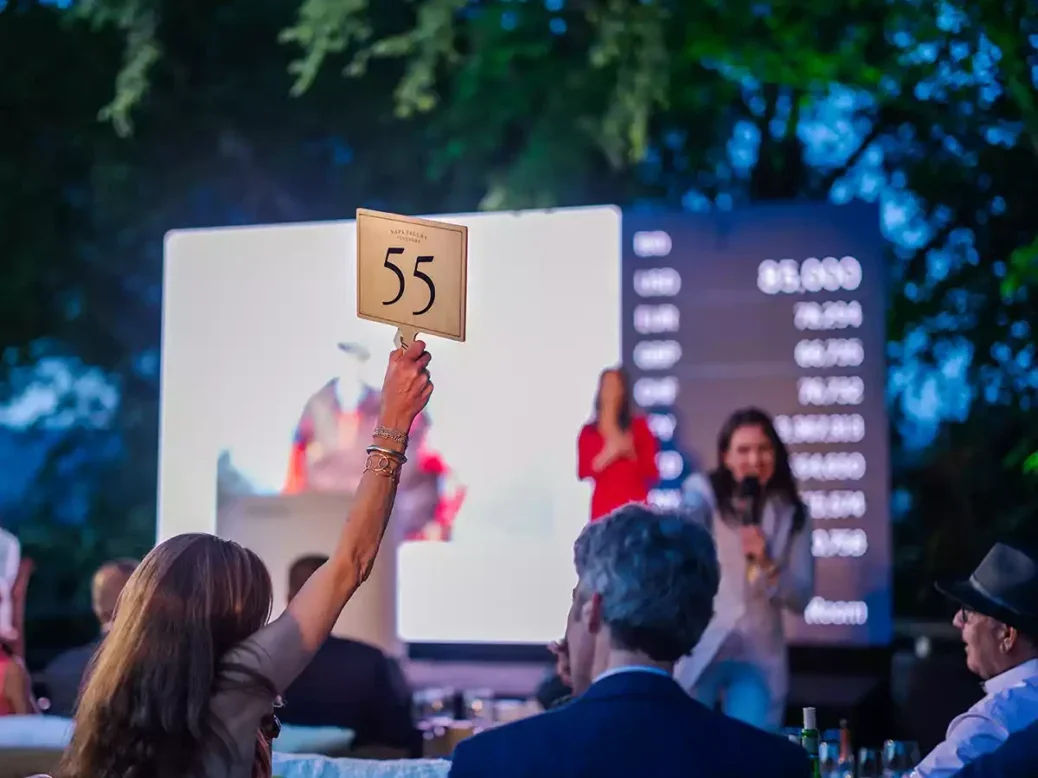
After an unsuccessful attempt to change approach in a bid to reach a wider audience, Auction Napa Valley made a triumphant return to its original format in its new venue at Far Niente. Elin McCoy reports.
On June 1, I joined nearly 400 vintners and wine lovers at Far Niente, a historic stone winery in the Napa Valley, whose name—romantically translated—means “without a care” and is intended to inspire the art of savoring the moment.
It was one of those casually elegant al fresco evenings I associate with the Valley: a fabulous dinner, the low sun casting a golden glow over rows of green-leafed vines, the jagged mountains in the distance, and great red and white wines to sip.
But after the walk on a stone bridge over a pond to the Gazebo Lawn, the auctioneer from Sotheby’s and a huge screen reminded everyone why we were all there—to bid big at a live charity auction, the finale of a wine-soaked weekend.
After a several-year hiatus, Auction Napa Valley was back.
Still, it had a different vibe than the glitzy, star-studded past editions. And that was by design. The new version of America’s most famous fundraising wine auction is smaller, more intimate, and more Napa-focused, with fewer celebs like Oprah and John Legend. And, although it had some of that old aura of luxury, it raised a whole lot less money. The entire weekend brought in $4.8 million, about half of that from the live auction, and all of it is earmarked for youth mental health programs in the valley. By contrast, the proceeds from the last Auction Napa Valley, in 2019, were more than double that amount. So, why did it change?
A look at the history of Auction Napa Valley
The first auction was held in 1981, and eventually it became the essential annual charity fundraiser for trade association and organizer Napa Valley Vintners. By the ’00s, its bling and glamour regularly drew between 900 and 1,000 attendees, including Silicon Valley moguls, Hollywood actors, top sports figures, the world’s ultra-rich collectors, and even, in 2019, winemaking star Olivier Berrouet of Château Petrus.
In the huge, air-conditioned white tent at the posh Meadowood Resort, bids sometimes topped $1 million for just one of the three to four dozen lots. When pop singer-songwriter Katy Perry belted out her hits on a purple-lit stage in in 2019, the event hit a new red-carpet high.
Then came 2020, when the COVID pandemic shut down the world. The Vintners took the opportunity for a rethink.
Especially over the last decade, I’d heard complaints from smaller wineries, arguing that the live auction lots didn’t spotlight Napa enough. Many others worried that it had become too elitist and exclusive, with pricey tickets people in the local community couldn’t afford.
The Vintners’ solution for an update was to abandon the auction-weekend format, and instead create Collective Napa Valley, a series of smaller fundraising events spread throughout the year in Napa and elsewhere. Though the aim was to be more inclusive and reach younger drinkers, few understood how the concept worked.
The annual June weekend was over forever, according to Napa Valley Vintners. The time slot was reduced to the popular barrel auction, and the Auction Napa Valley name disappeared.
Not everyone was happy, questioning the wisdom of abandoning a successful brand that not only had international recognition, but also, over the decades, had raised about $200 million for Valley charities.
Fast forward to 2024
This year, the name and past format were back, though there were big changes to the live-auction part. The barrel auction has slimmed down; the vintner-hosted dinners were as creative as ever; the much smaller live auction on Saturday, at a new venue, followed dinner instead of preceding it and came with a “smart-casual” Napa community vibe. I loved it.
But it’s still awfully elitist at $5,000 per person.
Auction Napa Valley 2024: The highlights
Here are the highlights. Kickoff day was still the crowded, noisy, five-hour Friday afternoon barrel auction, a heady wine, rock music, and culinary mix. Some 1,600 attendees in shorts and t-shirts tasted and bid on 80 wines still aging in the barrel.
The host, Hall winery in St Helena, was the first LEED Gold Certified winery in California. Its glass-and steel-construction, high-ceilinged spaces, and walls of windows give it the look of a sleek corporate hotel—except for the shiny fermentation tanks and views of vines. Serious art works are on display. From Highway 29 you can spot the 35ft (11m) tall stainless-steel rabbit sculpture, Bunny Foo Foo, by UK-born Lawrence Argent, which held paddle number 24 in honor of the occasion.
Inside, I wandered the two levels where winemakers stood at upturned barrels deftly pouring barrel samples, mostly Cabernets from 2020, 2021, or 2022. Each lot was divided into ten identical single-case offerings, so the top ten bids for each wine secured a 12-bottle case. The electronic screen above each vintner kept track of the latest bids. The buzz alerts you to the ones you must taste. Top bid? $4,560 a case for a unique Cabernet cuvée from Chappellet.
Outside, under a blazing sun, I checked out the dozen food stands and waited in a long line to get celeb chef Thomas Keller’s popular Buttermilk Fried Chicken slider with sweet-spicy hot sauce from his casual outpost Ad Hoc. With it, my pick from the 58 wines on offer was Gallica winery’s crisp, chilled rosé.
That night found me at one of the 18 intimate vintner-hosted dinners, where guests get to play Valley insider. These were as diverse and creative as ever, heavy on laid-back charm and top chefs and, at my dinner, lots of meat. Great food is another of Napa’s big draws. Anyone who loves the Classics might have opted for the “Feast Like a Roman” evening based on dishes from Ancient Greece and Rome to complement Pott and Perliss wines made in amphorae.
But I always go for the best view, and happily ended up high on Pritchard Hill at Chappellet, where we watched the sun set over Lake Hennessy. And then we dined on oxtail ravioli and dry-aged porterhouse steaks cooked by Michelin-starred chef John Tesar of Knife & Spoon Steakhouse, alongside old vintages that showed just how well the winery’s Cabernets age.
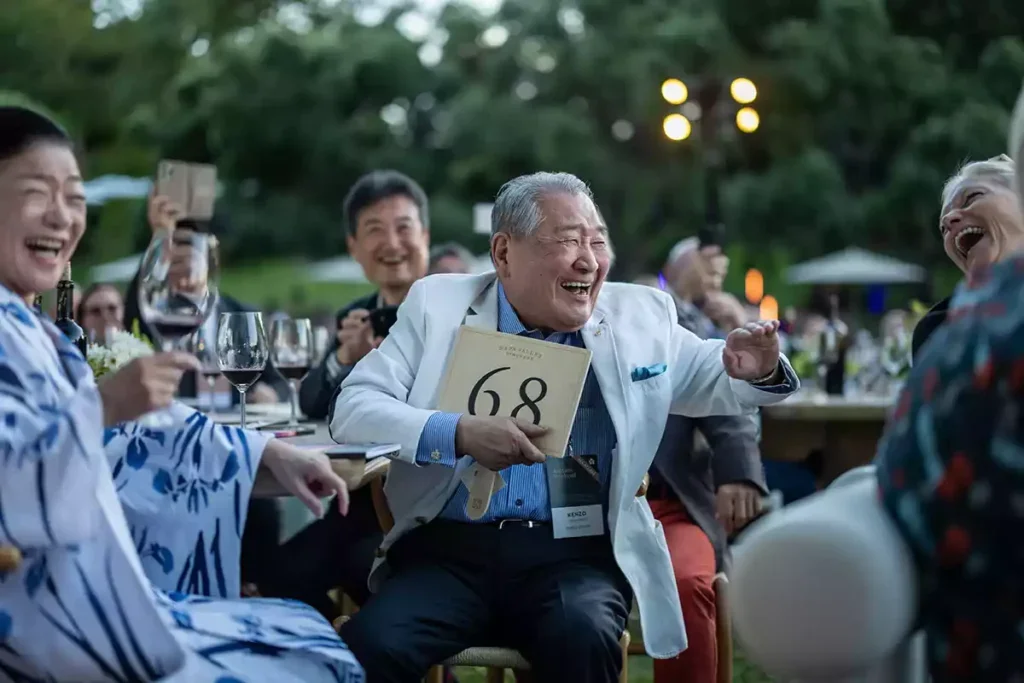
The new live auction
The biggest break from the past was Saturday’s newly configured live auction. The long tradition of holding it at Meadowood was gone, since much of the resort had been destroyed by the 2020 wildfires.
The gorgeous Far Niente winery in Oakville, however, with its historic caves and lavish gardens, originally founded in 1885, reflected very well Napa’s deep history. At the Carriage House reception, we feasted on caviar in tins displayed in silver bowls of ice and drank wonderfully fresh older vintages of Schramsberg sparkling wines.
The community style of the dinner, outdoors next to the winery at long tables with vintners sharing bottles, felt like wine-country harvest dinners everywhere. But the food was strictly Napa, cooked by Michelin-starred chef Philippe Tessier of Press, a frequent recipient of awards in WFW’s World’s Best Wine Lists. Summer truffles, crisp garden salads, and trout rillettes were followed Flannery Beef 21-day Tomahawk steaks, to go with the many Cabernets being poured.
At my table, the 2014 Robert Mondavi Stags Leap District Cabernet in magnum was clearly the winner. Conversation was political—one of my tablemates was white-haired Democratic Congressman Mike Thompson, a native of the Valley who has represented northern California wine country since 1998.
Dress was eclectic but stylish. Vintner Cyril Chappellet wore a custom grey Kemo Sabe cowboy hat and a bright red shirt; Michel Rolland came in a tailored blue suit, no tie, and his trademark black-framed glasses; Garen Staglin sported a dark blue velvety looking vest with fancy silver buttons and a pocket square; women wore floaty dresses, sometimes with denim or leather jackets. A few people brought their dogs.
I sipped Far Niente’s lush, sweet Dolce with dessert, and then an energetic band piped us down the many, many stone steps to the Gazebo Lawn below for the auction. Honorary chairs Jeff Smith and Carolyn Duryea of Hourglass winery welcomed us, and off went the bidding, each lot highlighted on a huge screen as the well-wined audience lounged on couches and chairs on the grass.
Only 15 lots were offered, compared to the several dozen in past years, but they echoed some of that earlier extravagance—a trip to Tokyo, a visit to Paris Fashion Week, gold and diamond Chanel bracelets. Lot 3, from Hall Winery, included a luxurious two-week voyage on mega yacht The World, another regular winner in the World’s Best Wine Lists, for $230,000. For $110,000, Chappellet’s Lot 7 featured VIP seats at the National Rodeo finals and VIP tickets to a Las Vegas concert with country music stars George Strait and Chris Stapleton, plus big bottles of Chappellet Cabernets. The top lot, a Staglin Super Barrel dinner with owners of five iconic Napa estates brought in a big number reminiscent of the past: $750,000. Twenty bidders snagged the $25,000 per couple spots and one paid $250,000 to sit at the head table next to Michel Rolland. The crowd went wild, throwing golden streamers that glittered in the moonlight.
Next year’s auction weekend is June 6–7, 2025. And it promises to be even bigger. ▉

